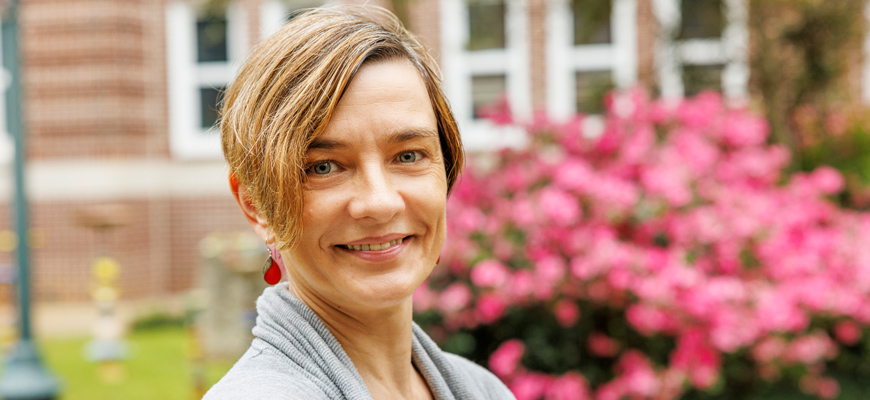
Professor helps turn youth lives around through art education
Olga Ivashkevich leads workshops for girls in juvenile arbitration program
Posted on: March 29, 2022; Updated on: March 29, 2022
By Megan Sexton, msexton@mailbox.sc.edu, 803-777-1421
As an art educator, Olga Ivashkevich has long been interested in seeing how girls express themselves through art.
When she arrived at the University of South Carolina in 2008 as a faculty member in School of Visual Art and Design, she wanted to pursue her interest in girlhood studies, something she had worked on as part of her dissertation at the University of Illinois Urbana-Champaign.
“I was interested to see how girls make meaning about girlhood and about their identities through spontaneous art-making outside of school” she says.
Her interests drew her to the Women’s and Gender Studies program, and she now directs the Women’s Well-Being Initiative, overseeing arts and digital media workshops for adolescent girls in the Juvenile Arbitration Program of Lexington County.
The workshops are part of a diversion program for middle and high school girls who are first-time, nonviolent offenders. The goal is to keep them out of the formal criminal justice system. Ivashkevich developed the curriculum for workshops, which use art and digital media to promote engagement and discussion of everyday issues faced by the girls and young women. Ivashkevich directs the program, and UofSC students from various disciplines are trained to help teach the classes.
“There is always an art-making component to it. And the art-making component is focused on the idea of feminist pedagogy and social change,” she says. “So, basically, art functions as a tool to think through the obstacles you have in life as a girl, as a young woman.”
I was interested to see how girls make meaning about girlhood and about their identities through spontaneous art-making outside of school.
Olga Ivashkevich, School of Visual Art and Design
The program aims to provide tools for the young women — who have gotten in trouble for issues like shoplifting, trespassing and underage drinking — so they can think about themselves in a more positive way and imagine their future in a different light.
“We usually begin the classes with a discussion of what things make you feel small and insignificant, what things put you down. And they create a map of obstacles, we call it a map of roadblocks. The girls say things like peer pressure. They say partner violence. They mention family issues. Or somebody in the family is incarcerated. They share not having enough money,” she says. “And most of them are just typical teenagers who need some guidance, who need a mentor, who need someone to talk to. And art is a wonderful vehicle to express yourself, to talk about your life obstacles and also to build community.”
The girls work on art that depicts social issues, speaking to topics like societal oppression, sexism, fairness and discrimination against women.
Ivashkevich, who grew up in Belarus and moved to the United States for graduate school, remains driven by the opportunity to use art to make a difference in young people’s lives.
“It's just very satisfying to see those teens walk in very silent and closed in with so much baggage, and then see them slowly opening up — and not just to us, adult facilitators, but to each other. And to see them have those conversations and realizing that they are not the only ones who feel that way,” Ivashkevich says. “This is why I still do this because having that experience for myself is deeply satisfying."